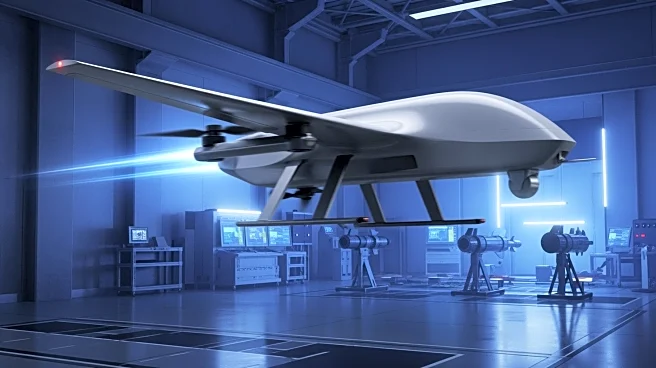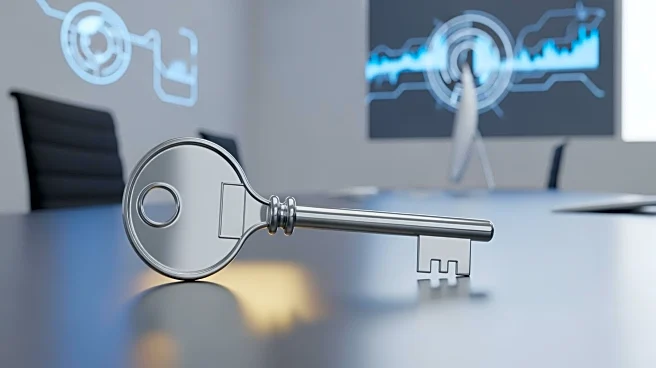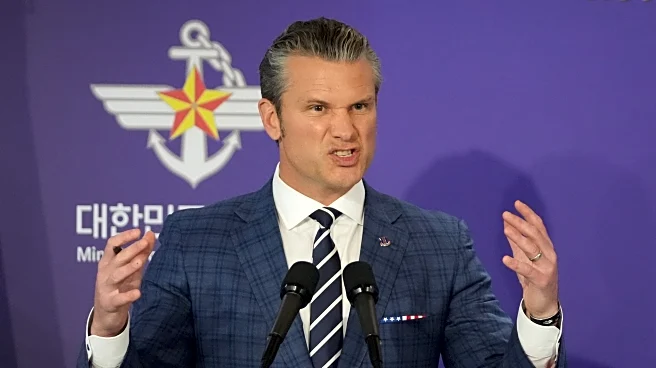What's Happening?
Defense Secretary Pete Hegseth announced a comprehensive overhaul of the Pentagon's acquisition process, aiming to expedite the procurement of weapons and systems. Speaking at the National War College,
Hegseth outlined plans to replace the existing Defense Acquisition System with a new Warfighting Acquisition System. This initiative seeks to reduce timelines, enhance competition, and empower acquisition officials to make swift decisions. The changes are designed to address the sluggish pace of current processes, which often take years to complete. Hegseth emphasized the need for a defense industrial base that matches the speed and agility of U.S. warfighters, advocating for a shift towards dynamic vendors capable of rapid production. The Pentagon will focus on commercial solutions to quickly equip troops, even if initial systems require improvements. Program leaders will gain more authority to manage budgets and performance priorities, while the Joint Capabilities Integration and Development System will be replaced by new organizations to streamline requirements and funding.
Why It's Important?
The revamp of the Pentagon's acquisition process is crucial for maintaining U.S. military competitiveness. By accelerating procurement timelines and fostering competition, the initiative aims to ensure that the military can respond swiftly to emerging threats. This shift could significantly impact the defense industry, encouraging innovation and investment in faster production capabilities. The changes may also lead to cost savings and improved efficiency, benefiting taxpayers and enhancing national security. Industry leaders have expressed support for the overhaul, recognizing its potential to address longstanding bureaucratic challenges. The success of this initiative could set a precedent for other government agencies seeking to modernize their operations.
What's Next?
The Pentagon will implement new structures, including the Requirements and Resourcing Alignment Board and the Mission Engineering and Integration Activity, to prioritize funding and innovation. The Joint Acceleration Reserve will provide financial resources to promising programs, ensuring rapid deployment. Each military service will review its internal processes to align with the new priorities. Collaboration between industry and government will be essential to refine and execute these reforms effectively. Stakeholders will monitor the impact of these changes on procurement efficiency and military readiness.
Beyond the Headlines
The overhaul of the acquisition process may have broader implications for U.S. defense policy and international relations. By streamlining procurement, the Pentagon could enhance its ability to support allies and respond to global crises. The focus on commercial solutions may also drive technological advancements, influencing sectors beyond defense. Ethical considerations, such as the balance between speed and thorough evaluation, will be critical as the new system is implemented.












